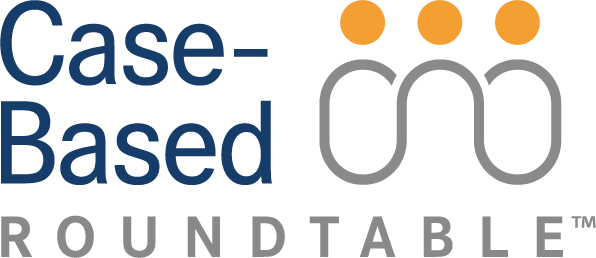
Management of Ruxolitinib in MF Allows for Continued Survival Benefit

In the second article of a 2-part series, Pankit Vachhani, MD, highlights the impact ruxolitinib has had, and continues, to have in treatment for patients with myelofibrosis and how physicians should manage this treatment for their patients.
CASE
- A 68-year-old woman presented to her physician with symptoms of mild fatigue.
- Her spleen was palpable 6-7 cm below the left costal margin.
- Medical history: No known comorbidities
- Next-generation sequence testing: JAK2 V617F mutation
- Karyotype: 46XX
- Bone marrow biopsy: megakaryocyte proliferation and atypia with evidence of reticulin fibrosis
- Blood smear: leukoerythroblastosis
- Diagnosis: Primary myelofibrosis (MF)
- Dynamic International Prognostic Scoring System: intermediate-1
- Mutation-enhanced International Prognostic Score System 70: intermediate risk
- The patient was not interested in transplant.
- A decision was made to initiate ruxolitinib (Jakafi).
Targeted Oncology: For patients with MF, what were their symptom responses while on ruxolitinib (Jakafi)?
PANKIT VACHHANI, MD: The patient's symptom responses were recorded using different Quality of Life questionnaires from COMFORT-II study [NCT00934544].1 Patients on
How did the survival data compare between these 2 trials?
COMFORT-I had an inherent crossover designed into it. After 6 months, or 24 weeks, patients who got placebo could cross over to ruxolitinib, and the majority did so.2 Despite that, [we saw] the overall survival [OS] favored the patients who were originally randomized to ruxolitinib vs those who were originally randomized to placebo. That HR of 0.69 [95% CI, 0.50-0.95; P = .025] tells the story, in this case, and the OS data from COMFORT-II had an HR of 0.48 [95% CI, 0.28-0.85; P = .009]....3 These data are all pointing towards a survival advantage for patients who go on ruxolitinib. It's important to note that there are survival data, but it was not the primary end point; it was the secondary endpoint, and it has been studied elsewhere as well.
How did the duration of treatment with ruxolitinib impact results for these patients?
[With ruxolitinib, we all ask] when should we begin treatment. Well, this was studied indirectly. The patients who went on the COMFORT studies were pooled together, so all the patients who were on ruxolitinib between these 2 studies were pulled together and [patients given] placebo and best available therapy were pooled on the other side.4 In terms of OS, if ruxolitinib was begun within 12 months of their MF diagnosis, those patients did the best in terms of survival, compared with patients who began ruxolitinib a little bit later, [at least] more than a year after diagnose [odds ratio (OR), 2.08; 95% CI, 1.12-3.90]. That's an important point, which is [suggesting that] maybe beginning ruxolitinib treatment early might be associated with a better survival outcome. Similarly, the spleen volume responses…were also better for those who begin ruxolitinib earlier rather than later [at 47.6% vs 32.9%, respectively (P = .06)], which is also important to keep in mind [when treating these patients].4
What are the major hematologic adverse events (AEs) physicians should be aware of when using ruxolitinib?
In both COMFORT-I and COMFORT-II, cytopenias were some of the more common AEs. Grade 3/4 anemia, for example, with ruxolitinib was seen in 45% and 42% [of patients] and thrombocytopenia in 13% and 8%, [respectively].1,2 These can be managed through either transfusion, a drug hold, or maybe dose reductions, but the point is that [these AEs are] ruxolitinib related, [possibly due to the] inhibition of the JAK-STAT pathway.
The concern that I've heard from many is if [the patient] starts off with anemia, are they not responding as well [to ruxolitinib] compared with those who don't start off with anemia? Or just the fact that ruxolitinib can cause anemia, does it make the overall outcomes worse? The answer is that ruxolitinib will lead to comparable outcomes, whether [the patient] has anemia or not.2 The spleen responses will be comparable, similarly and the symptom responses will be comparable. The underlying point is that the efficacy is maintained in patients with new onset anemia. We must separate drug-induced anemia of ruxolitinib, with the bad effects of anemia from MF, as these are 2 different types.
References:
1. Harrison C, Kiladjian JJ, Al-Ali HK, et al. JAK inhibition with ruxolitinib versus best available therapy for myelofibrosis. N Engl J Med. 2012;366(9):787-98. doi:10.1056/NEJMoa1110556
2. Verstovsek S, Mesa RA, Gotlib J, et al. A double-blind, placebo-controlled trial of ruxolitinib for myelofibrosis. N Engl J Med. 2012;366(9):799-807. doi:10.1056/NEJMoa1110557
3. Cervantes F, Vannucchi AM, Kiladjian JJ, et al; COMFORT-II investigators. Three-year efficacy, safety, and survival findings from COMFORT-II, a phase 3 study comparing ruxolitinib with best available therapy for myelofibrosis. Blood. 2013;122(25):4047-53. doi:10.1182/blood-2013-02-485888
4. Verstovsek S, Kiladjian JJ, Vannucchi A, et al. Early intervention in myelofibrosis and impact on outcomes: A pooled analysis of the COMFORT‐I and COMFORT‐II studies. Cancer. 2023;129:1681-1690. doi:10.1002/cncr.34707








































